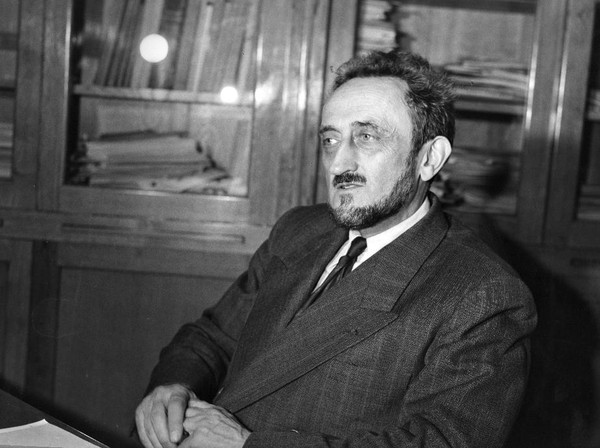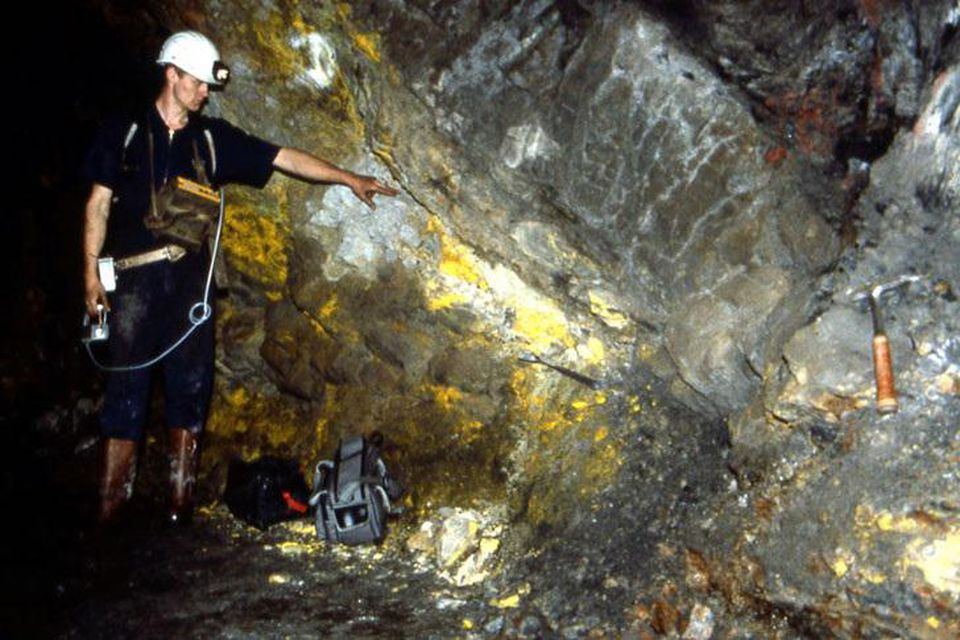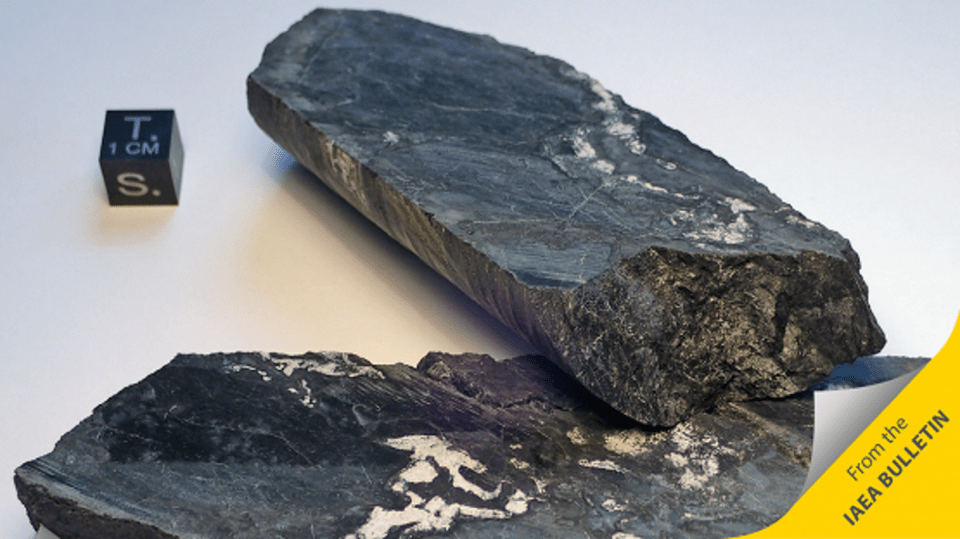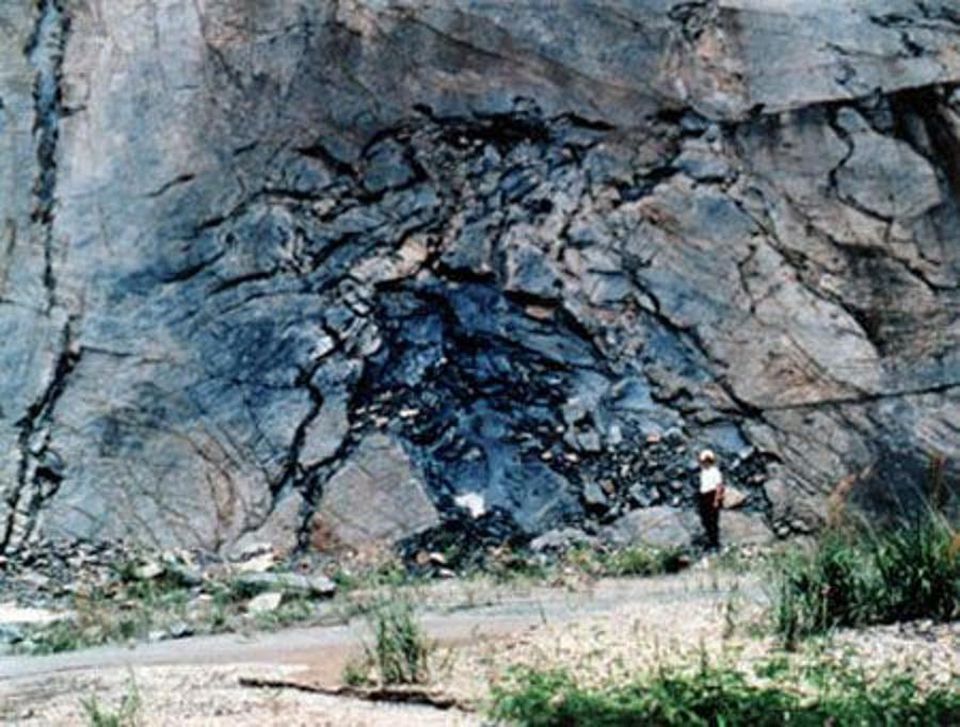There are many secrets hidden in the African continent, and one of them is located in Oklo, Gabon. There was one of the richest uranium deposits on Earth. It was mainly used for nuclear power plants in Europe. France has operated several mines in this region for several decades. However, the uranium reserves were depleted. But back in 1972, an ancient reactor, which is estimated to be around 2 billion years old, was discovered by French physicist Francis Perrin in Gabon, West Africa.
While examining a dark piece of radioactive natural uranium ore extracted from the Oklo mine, Perrin noticed that the high-grade ore had a lower proportion of uranium-235 (U-235). This discovery stunned the researchers and a team of scientists around the world. Uranium ore, like any other ore, is found in different places around the world, and each ore has its own characteristics that can be used to track its origin.

Typically, Oklo ore contained 0.7202% uranium-235. However, some samples were found to have a concentration of only 0.600%. And that’s a pretty significant difference. It looked like this uranium had already been inside the reactor, because it was depleted just as if it had already been used.
The Oklo reactor is unique because it is the only known natural nuclear reactor on Earth. Scientists have studied the site in order to learn more about the conditions that led to its formation, as well as the effects of prolonged nuclear reactions on the surrounding environment. During further research, it was found that the uranium deposits in Oklo underwent spontaneous fission inside a natural reactor. This happened about 1.8 billion years ago, and this required special conditions.

Read also:
- Are 3-Billion-Year-Old Klerksdorp Spheres Product Of Advanced Alien Machinery?
- 4,500-Year-Old Sumerian Queen Tomb Found In Iraq May Be Related to Annunaki
- Did A Nuclear War Between Anunnaki Gods Destroy Sodom And Gomorrah?
- Mysterious Reincarnation Of Omm Seti: British Woman Who Proved To Have Lived In Ancient Egypt
It turned out that the ratio of U-235 to U-238 happened to be almost the same as used by a modern nuclear reactor, and all that was needed was the introduction of groundwater into the reaction zone as a neutron moderator. An investigation began, and a commission of nuclear scientists was sent to Africa. After three months, scientists came up with shocking statements.

Firstly, initially, everything was fine with uranium, but it was used, and, accordingly, became depleted. Secondly, in the area where uranium was mined, several nuclear reactors were discovered at once, with a reasonable structure, which are at least 2 billion years old.
One of the key findings from the Oklo reactor is that it operated at a very low power level compared to modern nuclear reactors. Scientists estimate that the reactor produced around 100 kilowatts of power, which is equivalent to the energy consumption of a small village. This is because the concentration of U-235 in the ancient deposit was much lower than in the enriched uranium used in today’s reactors. Additionally, the Oklo reactor was cooled by water, which helped to regulate the temperature and prevent the reactor from overheating.

The Oklo reactor is also an important site for the study of nuclear geology. Scientists have used the site to study the behavior of uranium deposits and the conditions that led to the formation of the reactor. They have also studied the effects of the reactor on the surrounding rock and the groundwater. These studies have provided important insights into the geology of uranium deposits and the processes that lead to the formation of natural nuclear reactors.
The Oklo natural nuclear reactor is also of interest to the field of nuclear physics. The site has provided valuable data on the behavior of neutrons in natural reactors, which is important for the development of new nuclear technologies. Scientists have also used the Oklo reactor to study the behavior of nuclear reactions in extreme environments, which is important for the development of nuclear power plants that can operate in harsh conditions.
Another important aspect of the Oklo reactor is its potential use as a tool for nuclear forensics. Nuclear forensics is the study of the origin and history of nuclear materials, and the Oklo reactor provides an important case study for scientists studying the origins of nuclear materials. Scientists have used the site to study the isotopic composition of the uranium and other elements found at the site, which can help to identify the origins of nuclear materials used in weapons or other applications.
The Oklo natural nuclear reactor is also of great interest to the field of astrobiology. The study of this ancient reactor provides important insights into the conditions that may have existed on other planets or moons in the past. Scientists have used the Oklo reactor to study the possibility of natural nuclear reactors on other celestial bodies and to study the conditions that may have existed on early Earth.
These reactors worked for around 500,000 years, and the spent material was not utilized or removed from the area. Gradually, the excitement at the end of the 20th century subsided, uranium mining continued, and the reactors were somehow destroyed. It is no longer possible to study the site, scientists are unlikely to find there something that would help modern technologies reach a higher level in this area.









The reactors were destroyed?… how convenient! Surely, one or more of these scientists managed to get a photograph!